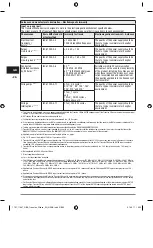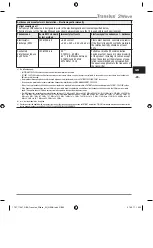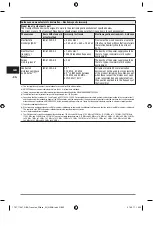
- 30 -
GB
Guidance and manufacturer’s declaration – Electromagnetic immunity
Signal input / output parts port
The Translux 2Wave device is designed to work in the electromagnetic environment specifi ed below.
The client or user of the Translux 2Wave device should always make sure that it is used only in such environment.
Phenomenon
Basic EMC standard
or test method
Immunity test levels
Electromagnetic environment – Guidance
Electrostatic
discharge (ESD)
e)
IEC 61000-4-2
±8 kV contact
±2 kV, ±4 kV, ±8 kV, ±15 kV air
Floors must be wood, concrete or ceramic.
If the fl oor is lined with synthetic materials,
the relative humidity should be at least
30 %
Electrical fast
transients /
bursts
b) f)
IEC 61000-4-4
±1 kV contact
100 KHz repetition frequency
The quality of the power supply should be
that of a typical commercial or hospital
environment.
Surges
Line-to-ground
a)
IEC 61000-4-5
± 2kV
The quality of the power supply should be
that of a typical commercial or hospital
environment.
Conducted
disturbances induce
by RF fi elds
b) d) g)
IEC 61000-4-6
3 V
h)
0,15 MHz - 80 MHz
6 V
h)
in ISM bands between
0,15 MHz and 80 MHz
i)
80 % AM at 1 KHz
c)
Portable or mobile RF communication
device must not be used in close proximity
of the product, including its cables, except
when these respect the distances of sepa-
ration recommended and calculated from
the equation applicable to the frequency of
the transmitter.
a) This test applies only to output lines intended to connect directly to outdoor cables.
b) SIP/SOPS whose maximum cable length is less than 3 m in length are excluded.
c) Testing may be performed at other modulation frequencies identifi ed by the RISK MANAGEMENT PROCESS.
d) Calibration for current injection clamps shall be performed in a 150 Ω system.
e) Connectors shall be tested per 8.3.2 and Table 4 of IEC 61000-4-2:2008. For insulated connector shells, perform air discharge testing to the connector shell
and the pins using the rounded tip fi nger of the ESD generator, with the exception that the only connector pins that are tested are those that can be contacted
or touched, under conditions of INTENDED USE, by the standard test fi nger shown in Figure 6 of the general standard, applied in a bent or straight position.
f) Capacitive coupling shall be used.
g) If the frequency stepping skips over an ISM or amateur radio band, as applicable, an additional test frequency shall be used in the ISM or amateur radio band.
This applies to each ISM and amateur radio band within the specifi ed frequency range.
h) r.m.s., before modulation is applied.
i) The ISM (industrial, scientifi c and medical) bands between 150 kHz and 80 MHz are 6, 765 MHz to 6,795 MHz; 13,553 MHz to 13,567 MHz; 26,957 MHz to
27,283 MHz; and 40,66 MHz to 40,70 MHz. The amateur radio bands between 0, 15 MHz and 80 MHz are 1,8 MHz to 2,0 MHz, 3,5 MHz to 4,0 MHz, 5,3 MHz
to 5,4 MHz, 7 MHz to 7,3 MHz, 10,1 MHz to 10,15 MHz, 14 MHz to 14,2 MHz, 18,07 MHz to 18,17 MHz, 21,0 MHz to 21,4 MHz, 24,89 MHz to 24,99 MHz,
28,0 MHz to 29,7 MHz and 50,0 MHz to 54,0 MHz.
1707_11667_GBA_Translux_2Wave_EU_NENA.indb GB30
1707_11667_GBA_Translux_2Wave_EU_NENA.indb GB30
07.09.17 16:22
07.09.17 16:22
















































